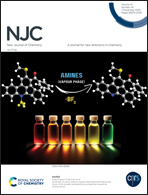Molecular precursor approach to develop catalytically relevant nanosized metals, palladium chalcogenides and ternary/quaternary metal chalcogenides
Abstract
Inorganic chemistry at the interface with other scientific disciplines has led to the emergence of several new fields like organometallic chemistry, bio-inorganic chemistry, solid-state chemistry, environmental chemistry, etc. In the past few decades, it has made inroads into yet another dimension of immense relevance, i.e., nanoscience and nanotechnology. Accordingly, a number of approaches for the synthesis of nanomaterials have been developed. Of these routes, the molecular precursor route based on organometallic or metallo-organic compounds has emerged as a versatile approach for the synthesis of both nanocrystals and thin films. In this essay an attempt has been made to present an overview of utility of organometallic or metallo-organic compounds as molecular precursors for the synthesis of nanomaterials with reference to catalysis and materials science. Applications of metal nanoparticles (NPs) and metal chalcogenide NPs, generated through the molecular precursor route, in catalysis have been discussed. Synthesis of ternary and quaternary metal chalcogenide nanomaterials by the molecular precursor route has been outlined.

- This article is part of the themed collection: 2023 Focus and Perspective articles


 Please wait while we load your content...
Please wait while we load your content...